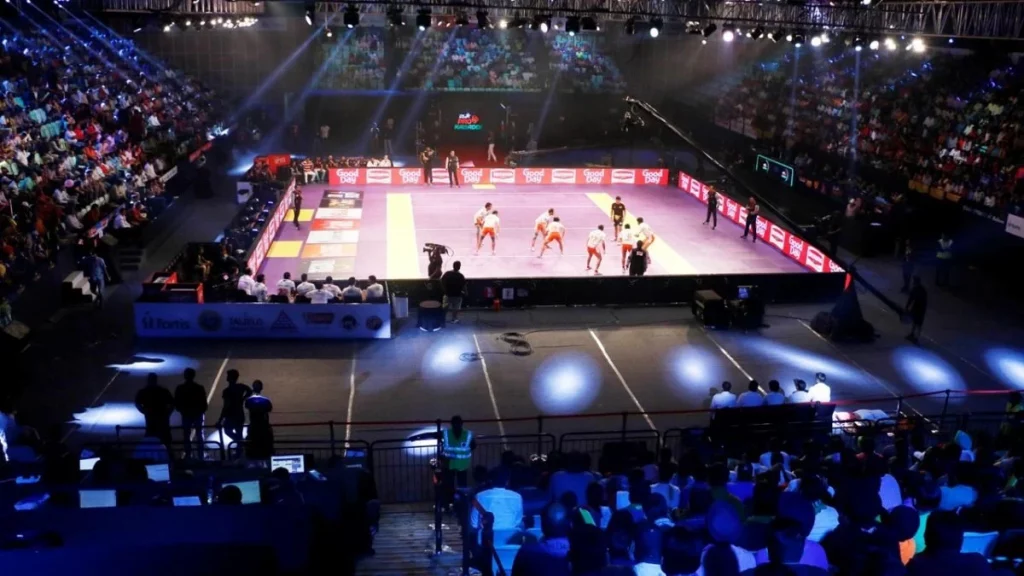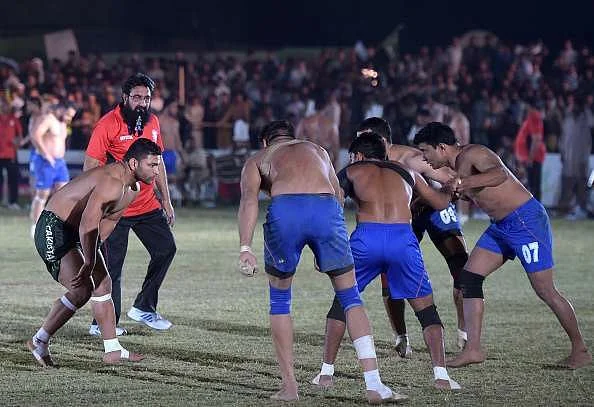Kabaddi has always been a sport that has prioritized grassroots participation. Pakistan, Sri Lanka, and Nepal, all part of the Indian subcontinent, have built up a reputation in the sport over the years. The start of a professional Kabaddi league in the country was expected to bring the sport the much-needed popularity and attention it lacked a few years ago.

However, unlike many other sports, this ultimate contact sport can be played in two separate styles. The normal design and the circle style are the two options. Although the game’s nature stays the same, major differences in the regulations between the two forms have caused a lengthy dispute among the sport’s devoted fans.
Some players from the circle Kabaddi league have also competed in the Pro Kabaddi League (PKL). All-rounder Ran Singh of the Bengal Warriors has plenty of circle Kabaddi expertise.

Here, we dive deep into the differences that set these two styles of the same sport apart.
Standard Style Kabaddi
Dimensions:
Kabaddi mats in standard style should be 13 meters by 10 meters, according to the Amateur Kabaddi Federation of India (AKFI), which could eventually form the playing court. The court is divided into two equal half by the mid-line.
The first parallel line from the mid-line is called a baulk line, and it measures 3.75 meters from the mid-line. The foyer is normally one meter wide and one meter long. When a raider contacts an opponent’s defender, it becomes part of the game. The bonus and baulk lines are separated by one meter. In the standard style of Kabaddi, a man’s weight must be less than 85 kg. It is less than 75kg for ladies.
Scoring:
A bonus point is available in the standard style. With six or more defenders on the court, the raider crosses over the bonus line. The raider is free to contact one or more defenders. Following that, points are granted based on how many defenders he has touched on his way back.
This method also allows for an all-out, in which the other team’s seven players are declared out, and the raiding team receives two extra points.
Circle Style Kabaddi
Dimensions:
The sector is a 22-meter-radius circle. A circle-style mid-line divides it into two equal parts. There are no lobbies or bonus lines in this format.
A ‘Pala,’ or gate during the playing field, is introduced in the circle type of Kabaddi. It has a total length of 6 meters. On all sides, this critical line is usually three meters long. As a result, the raider must ensure that he uses this opportunity to return to his half.
The fundamental limit, often known as the baulk line, is a line drawn from the pala post. On all sides of the mid-line, it has a radius of 6m, forming a D. There are no weight restrictions with the circle style. The rule states that each team will have eight active players and five substitutions per squad.
Scoring
In circular style, the out and revival rules do not apply, and the defenders are called ‘anti-raiders’ or ‘anti.’ During his raid, the raider can only touch one anti. The defensive team receives a point if he touches more than one.
The opposing side receives a single point if the raider returns safely to his court without scoring. Another common rule is that if a raid isn’t completed after 30 seconds, the opposing side gets the point. The circle style of Kabaddi incorporates the concept of self-out.’ If a player is pushed over the boundary during the game, they will receive an additional point.
Qualities worth mentioning
Each match lasts 40 minutes, divided into two halves of 20 minutes each. The trademark rule applies to both formats: each raid has a limited duration of 30 seconds, and the raider must chant “Kabaddi Kabaddi,” also known as the Cant, throughout the raid, otherwise, a point will be awarded to the opposition.
Read: Top 3 fastest players to reach 600 raid points in Pro Kabaddi League history








